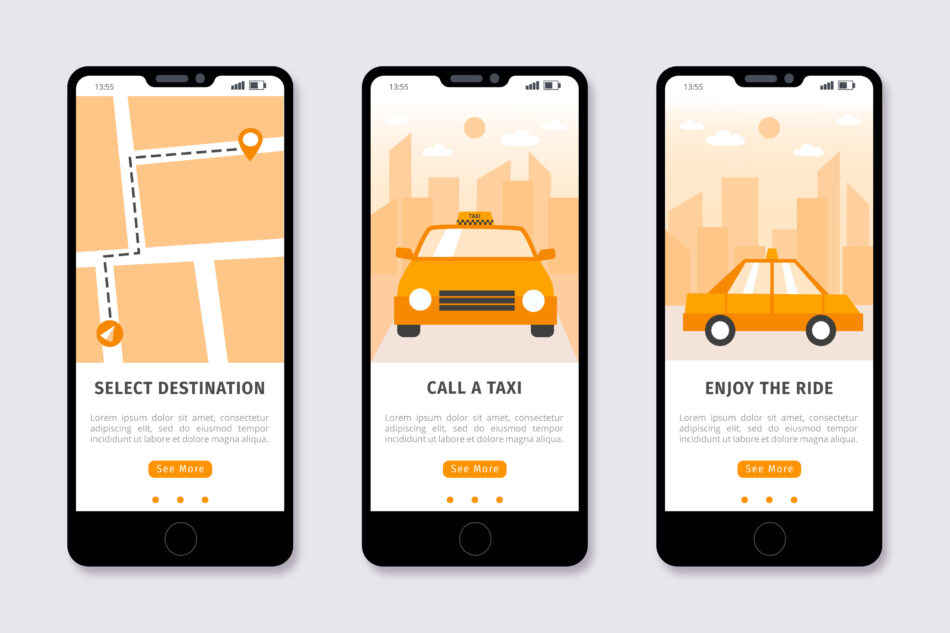The rapid evolution of mobile technology has transformed the way people move from one place to another. Among the many innovations that have reshaped urban mobility, ride-sharing apps have emerged as one of the most impactful. By bridging the gap between drivers and riders, these platforms provide convenient, cost-effective, and eco-friendly transportation solutions. Developing a successful on-demand ride-sharing app involves much more than coding—it requires a deep understanding of user behavior, industry trends, technology stacks, and operational models.
In this article, we’ll explore the essentials of ride-sharing app development, the core features, benefits, and the technology that drives seamless connections between drivers and riders.
Why Ride-Sharing Apps Are in Demand
The global ride-sharing market has witnessed exponential growth in the last decade. Giants like Uber, Lyft, and Bolt paved the way, but the demand for localized, niche, and innovative mobility solutions continues to grow. Some of the key reasons for this demand include:
Convenience & Accessibility: Users can book a ride within seconds, eliminating the hassle of hailing cabs or waiting for public transport.
Affordability: Ride-sharing often provides cheaper alternatives to traditional taxis due to dynamic pricing and shared rides.
Sustainability: Pooling multiple riders reduces the number of vehicles on the road, lowering emissions and easing traffic congestion.
Employment Opportunities: Apps provide drivers with flexible earning opportunities and a platform to work on their own terms.
These factors make ride-sharing not just a trend but a sustainable mobility model of the future.
Core Features of a Ride-Sharing App
A ride-sharing app typically consists of three main panels: Rider App, Driver App, and Admin Dashboard. Each requires distinct features to ensure smooth functionality.
Rider App Features
Easy Registration & Login: Sign-up via email, phone, or social media accounts.
Real-Time Ride Booking: Users can book rides instantly or schedule for later.
Fare Estimation: An upfront price estimate before confirming the ride.
Live GPS Tracking: Real-time tracking of driver’s arrival and ride progress.
Multiple Payment Options: Integration of cards, wallets, and even cash payments.
Ratings & Reviews: Riders can share feedback to improve service quality.
Driver App Features
Driver Profile & Verification: Ensures safety and builds trust among riders.
Ride Request Notifications: Instant alerts about nearby ride requests.
Navigation & Route Optimization: Integrated GPS for efficient driving.
Earnings Dashboard: Real-time insights into trips, payments, and bonuses.
Ride History: A record of completed and upcoming rides.
Admin Dashboard Features
User & Driver Management: Handles registrations, verifications, and support.
Analytics & Reports: Provides insights into revenue, trips, and performance.
Surge Pricing Controls: Adjusts fares based on demand and supply.
Safety & Dispute Resolution Tools: Ensures compliance and handles complaints.
Technology Stack for Development
Developing a robust ride-sharing app requires the right mix of technologies. Here are the most commonly used tools and frameworks:
Front-End Development: React Native or Flutter for cross-platform apps.
Back-End Development: Node.js, Python (Django/Flask), or Java Spring Boot.
Database: PostgreSQL, MySQL, or MongoDB for data storage.
Cloud Hosting: AWS, Google Cloud, or Microsoft Azure for scalability.
Maps & Navigation: Google Maps API, Mapbox, or OpenStreetMap.
Payment Gateways: Stripe, PayPal, Braintree, or Razorpay integration.
Push Notifications: Firebase Cloud Messaging or OneSignal.
Choosing the right stack ensures speed, security, and seamless connectivity between drivers and riders.
Benefits of Developing a Ride-Sharing App
Creating a ride-sharing platform offers several advantages for both businesses and users:
Revenue Generation: Businesses earn through commissions, surge pricing, subscriptions, or in-app advertisements.
Scalability: Apps can easily expand across cities or regions with minimal infrastructural costs.
Enhanced Customer Experience: With real-time tracking and multiple payment options, user satisfaction increases.
Operational Efficiency: Automation reduces the need for manual coordination between drivers and riders.
Brand Building: A custom ride-sharing app builds brand identity and loyalty in a competitive market.
Challenges in Ride-Sharing App Development
While the benefits are significant, there are challenges developers and businesses must address:
High Competition: Standing out against global giants requires unique features or niche targeting.
Safety Concerns: Both driver and passenger safety remain top priorities, requiring strict verification and in-app SOS features.
Regulatory Compliance: Different regions have varied laws around ride-sharing, licensing, and taxes.
Technical Complexity: Real-time location tracking and payment integration require flawless execution to avoid downtime.
Customer Trust: Building trust takes time and requires consistent service quality.
Addressing these challenges with innovative strategies ensures long-term sustainability.
Future Trends in Ride-Sharing
The ride-sharing industry is constantly evolving. Some emerging trends shaping the future include:
Electric & Green Vehicles: More platforms are integrating electric vehicles to reduce environmental impact.
AI & Machine Learning: Predictive algorithms optimize routes, pricing, and demand forecasting.
Autonomous Vehicles: Self-driving cars could revolutionize ride-sharing in the coming years.
Multi-Modal Transport: Integration with bikes, scooters, and public transport for a complete mobility ecosystem.
Blockchain Payments: Decentralized and secure payments may gain popularity for global transactions.
Conclusion
On-demand ride-sharing apps have revolutionized the way we commute, offering convenience, affordability, and efficiency at our fingertips. Developing such an app requires a thoughtful balance of design, technology, and user experience. By focusing on core features, ensuring security, and staying ahead with innovative solutions, businesses can create ride-sharing platforms that not only connect drivers and riders seamlessly but also contribute to the future of smart mobility.
As cities continue to grow and mobility needs evolve, ride-sharing will remain at the heart of modern transportation—driving innovation, sustainability, and convenience for years to come.


